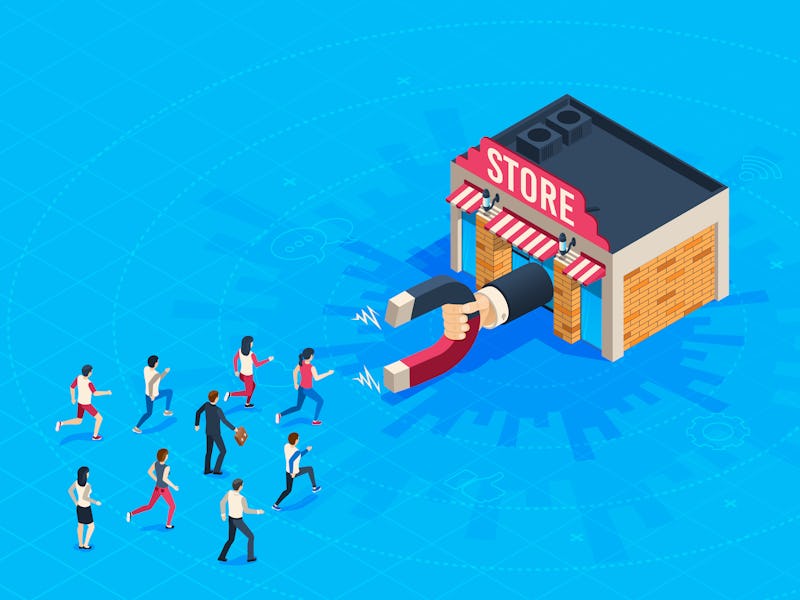The 4 psychology-backed tips that make you a smarter shopper
The price might be right, but that doesn't mean the deal is. Here's how to stay savvy in the sales.

The holiday season is the time for giving — and the time for shopping. But despite our enthusiasm for holiday sales, humans are pretty bad at shopping. We’re simply not good at putting our intelligence to the test and buying the right things for us — and we’re not getting any better at it.
Humans are too-easily swayed by emotions, overtly influenced by environments, and don’t have good enough memory to remember what we wanted in the first place. Throw in the added temptations of a sale, and our brains just lose it.
The good news is it doesn’t have to be like this. With scientists’ help, we can become better consumers — even if your Instagram feed does throw up a flash-sale that’s just too good to be true.
Here are four research-backed tips that can help you be smarter at sales — and shopping in general.
Don’t become distracted by too many photos
When you shop online, you can’t feel how soft fabric is, or know just how big a TV looks in a room. All you have to go on are what the manufacturer tells you (and they are trying to sell you something), reviews from other buyers, and photographs. Unfortunately, looking at too many photographs inhibits us from making a decision on what makes one product better than another, a 2014 study suggests.
There are ways to become a smarter shopper.
This is known as “product-agnosia effect.” While your intuition might prompt you to look at more pictures to get a better sense of what you’re getting, research suggests that observing too many photos overrides our ability to accurately process information. That causes us to make less confident purchasing choices.
To prevent product agnosia, take a mental shopping break, research suggests. Throw everything that you’re interested in into a digital cart, and return only when your brain has had some time to process your options.
Pay attention to how the original price is presented
Who doesn’t want to save money in the sales? But not all sales are created equal. Sometimes, we perceive that we’re getting a good deal, but in reality, some things still aren’t worth the money.
How the original price of something is advertised is crucial to sparking our interest — not what the sales price actually is, a 2013 study suggests. The difference between the big number and the small number takes top priority in our minds — which can lead to a purchase you may not even want.
Looking at those two numbers side-by-side distracts people from other crucial factors that they should take into account for making decisions, like the quality of the product and how much it costs at other stores.
The next time you shop, don’t get infatuated with the price difference — and don’t let stores fool you by presenting the original price on a big sign. Make it a purchase that considers more than price (like whether you actually want it at all), and you and your wallet will be happier.
Avoid free samples, unless you’re planning on buying anyway
Free trials enter us into a quid-pro-pro relationship, according to research by Robert Cialdini, an expert in the science of influences. We feel the need to fulfill some part of the deal, and that can pressure us into signing up for something we may not want.
People who sign up for free trials often end up rationalizing purchasing decisions they likely wouldn’t have made if they hadn’t signed up for the free trial in the first place, Caldini suggests.
A free trial is hardly ever free.
And while free-trial customers don’t always stick around, they are more responsive to marketing efforts than other customers, a 2014 study suggests. That’s good news for companies that want to target free-trial customers with ads — and bad news for customers who feel guilty about not making a purchase.
Trials are great if you want to try out a product you’re already excited about buying — but they are bad news if you think you’re just going to get something free for a few months. Stay away from the freebies.
Really, really think about what the price is
It may seem obvious, but research suggests that, when it comes to purchasing decisions, we pay more attention to how a number on a price tag makes us feel, not what it means for our wallet.
In a 2015 study “This Number Just Feels Right”, researchers found that rounded numbers — like $200, say — influence people to make purchasing choices based on their feelings, but non-rounded numbers — like $196.76 — influence us to think more practically.
That may be because rounded numbers aren’t cognitively taxing — they are easy to understand, add up neatly, and put our mind at ease. Meanwhile, non-rounded prices are more difficult to process and add up — kicking our brains into gear. Next time you go to buy something, think about why you like that price — is it a good deal, or is it just easy to understand?